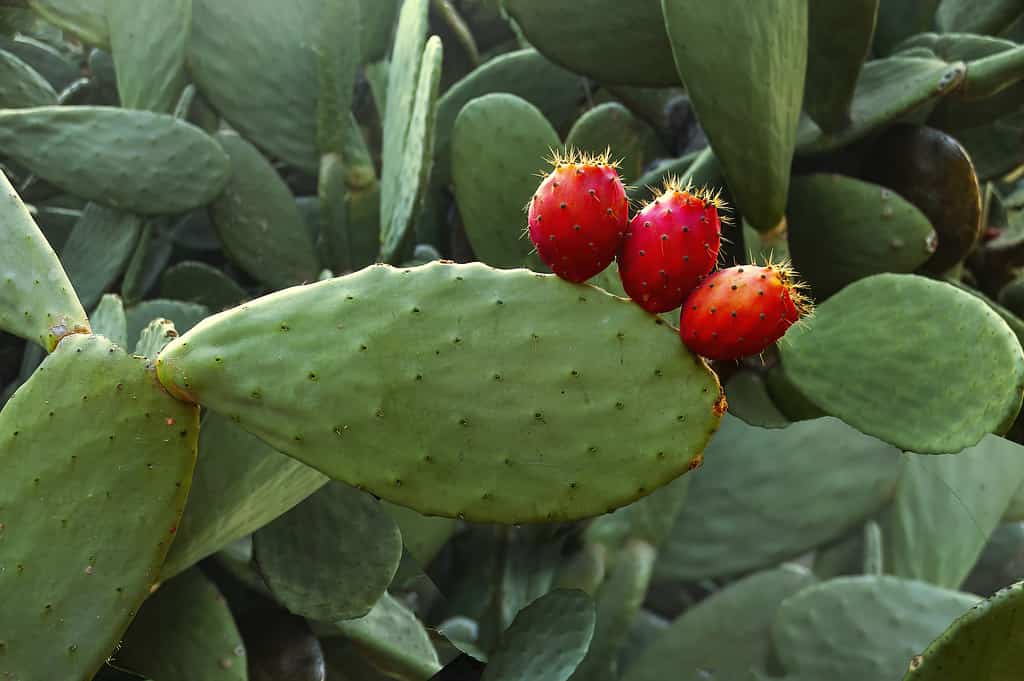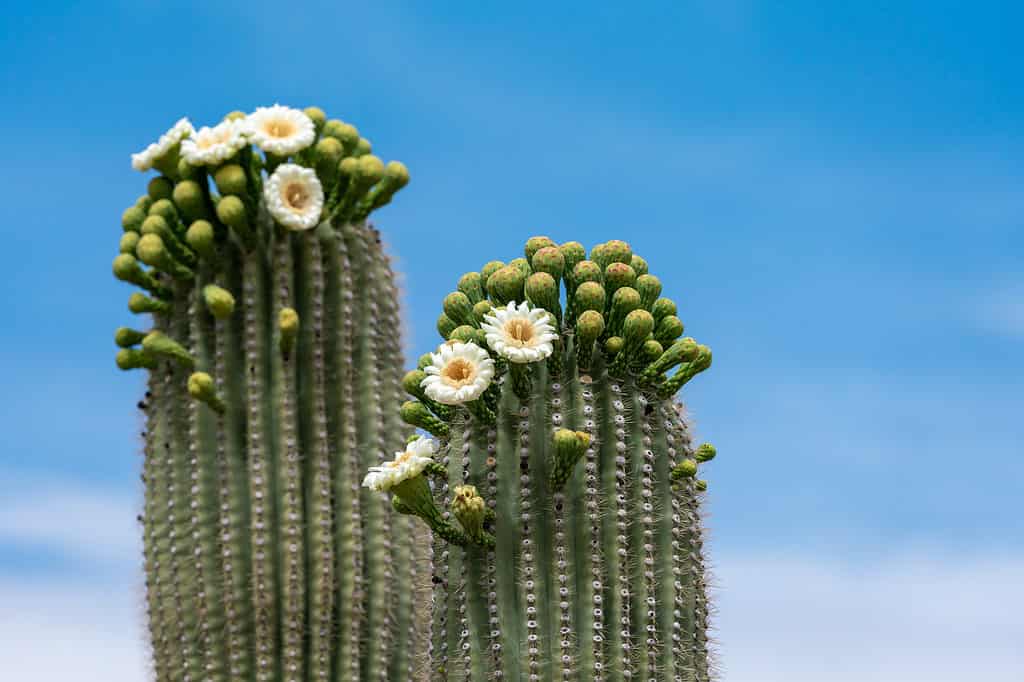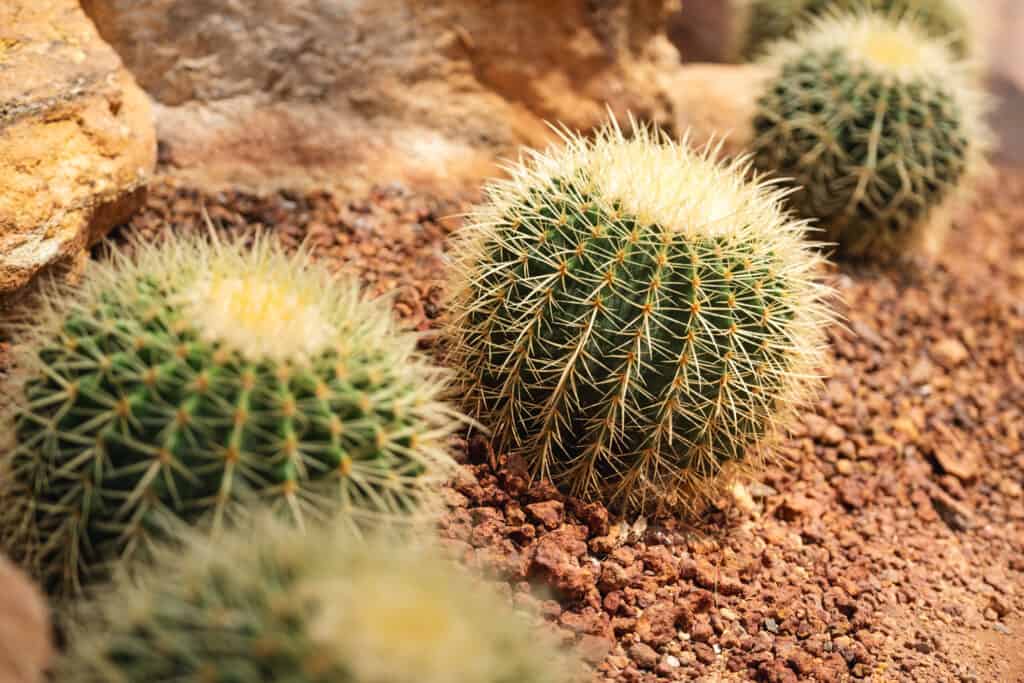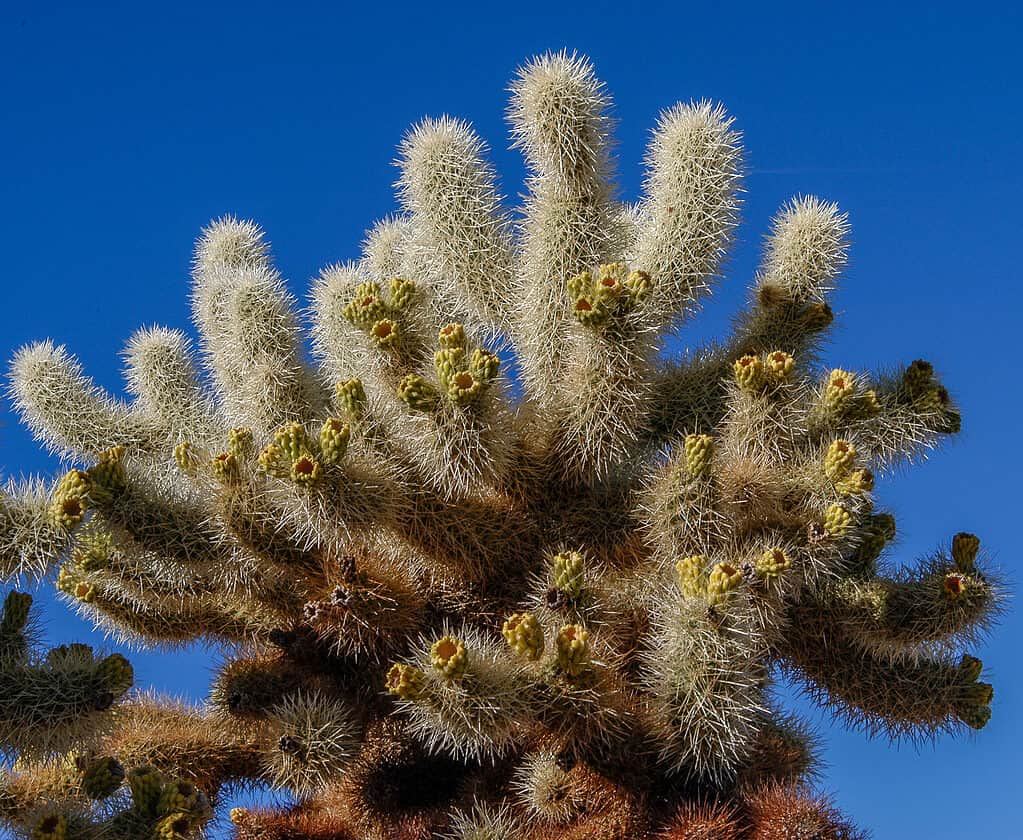Cacti have long been a staple in the diets of many cultures, prized for their nutritional benefits and unique flavors. But have you ever wondered what could happen if you eat too much cactus? In this article, we’ll dive into the potential consequences of overindulging in these spiky plants and provide tips on how to enjoy them safely and responsibly.
Let’s get started!
1. Gastrointestinal Issues
Although cacti can be a nutritious and delicious addition to your diet, overindulging in them can lead to uncomfortable gastrointestinal issues. Let’s take a closer look at some of these problems and how you can address them.
Nausea, Vomiting, and Diarrhea
Eating too much cactus can sometimes lead to unpleasant gastrointestinal issues, such as nausea, vomiting, and diarrhea. This might be due to the high fiber content, which can cause your digestive system to work harder than usual.
Constipation and Bloating
On the flip side, overconsumption of cacti can also cause constipation and bloating. The high fiber content can make it difficult for your body to break down and digest the cactus, leading to these uncomfortable symptoms.
Remedy
If you find yourself experiencing gastrointestinal issues after eating too much cactus, consider taking some over-the-counter remedies like antacids or gas relief medications. Drinking plenty of water can also help alleviate these symptoms. But remember, the best way to prevent these issues is to consume cacti in moderation as part of a balanced diet.

Although cacti can be a nutritious and delicious addition to your diet, overindulging in them can lead to uncomfortable gastrointestinal issues.
©Andrey_Popov/Shutterstock.com
2. Allergic Reactions
While cactus is generally safe for most people to consume, some individuals might experience allergic reactions when eating too much of it. Let’s explore the symptoms and causes of these reactions, along with some remedies and prevention strategies.
Symptoms and Causes
Allergic reactions to cacti can manifest in various ways, such as:
- Itching
- Hives
- Swelling
- Difficulty breathing
These symptoms might be caused by an individual’s sensitivity to certain compounds found in cacti or a histamine response triggered by overconsumption.
Remedy
If you suspect you’re experiencing an allergic reaction to cacti, consult a medical professional for proper evaluation and treatment. Over-the-counter antihistamines may help alleviate mild symptoms, but more severe reactions may require emergency medical attention. Always follow your doctor’s advice and recommendations.
Prevention Strategies
To minimize the risk of allergic reactions, start by consuming small amounts of cactus and monitor your body’s response. If you don’t experience any adverse reactions, you can gradually increase your intake. But if you notice any symptoms of an allergic reaction, stop consuming cactus immediately and consult a healthcare professional for guidance.
3. Hydration Imbalances
Cacti are known for their water-storing abilities, which can be beneficial in maintaining hydration. But overindulging in cactus can sometimes lead to hydration imbalances, which can affect your overall health. So let’s discuss dehydration, overhydration, and electrolyte imbalances caused by cactus overconsumption.
Dehydration and Overhydration
While cacti can help maintain hydration, eating excessive amounts might lead to the opposite problem — dehydration. This can happen if the high fiber content in cactus causes diarrhea, leading to a loss of fluids.
On the other hand, consuming too much cactus might cause overhydration, as your body struggles to process the excess water content.
Electrolyte Imbalances
In addition to affecting your hydration levels, consuming too much cactus can also lead to electrolyte imbalances. This is because cactus contains minerals like sodium, potassium, and magnesium, which can be thrown off balance by overconsumption.
Remedy for Hydration Imbalances
If you experience hydration imbalances due to cactus overconsumption, adjust your water and electrolyte intake. For dehydration, drink more water and consider using oral rehydration solutions. In the case of overhydration, reduce your water and cactus intake, and consult a healthcare professional if symptoms persist. To prevent electrolyte imbalances, maintain a balanced diet with various nutrient-rich foods.
4. Nutrient Deficiencies
Cactus can be a great source of vitamins, minerals, and other essential nutrients. But relying too heavily on cactus in your diet can lead to nutrient deficiencies, as it may not provide all the nutrients your body needs. Let’s explore the potential vitamin and mineral imbalances caused by cactus overconsumption and their effects on overall health.
Vitamin and Mineral Imbalances
While cactus contains many beneficial nutrients, if you eat too much cactus you might trigger an imbalance in your vitamin and mineral intake. For instance, cactus is rich in certain nutrients like vitamin C and potassium but lacks others, such as vitamin B12 and iron. Therefore, consuming too much cactus might cause you to miss out on these essential nutrients, leading to deficiencies.
Effects on Overall Health
Nutrient deficiencies can have a wide range of effects on your overall health, depending on the specific nutrients you lack. For instance, a vitamin B12 deficiency can lead to anemia, while a lack of iron can cause fatigue and weaken your immune system. Maintain a balanced diet to ensure you’re getting all the essential nutrients for optimal health.
Remedy
If you suspect you’re experiencing nutrient deficiencies due to cactus overconsumption, consult a healthcare professional for guidance. They can help identify deficiencies and recommend appropriate dietary changes or supplements to correct the imbalances.
Remember, the key to preventing nutrient deficiencies is to consume a varied and balanced diet. It must include various foods, including fruits, vegetables, proteins, and whole grains.

Relying too heavily on cactus in your diet can lead to nutrient deficiencies, fatigue, anemia, and a weakened immune system.
©nikkimeel/Shutterstock.com
5. Drug Interactions
While cacti can be a healthy addition to your diet, consider how they might interact with any medications you’re taking. In some cases, consuming too much cactus can lead to potential drug interactions, affecting the efficacy of your medications or cause side effects.
Let’s discuss some common drug interactions associated with cactus overconsumption and how you can address them.
Blood Sugar Control Medications
Cacti have been known to help regulate blood sugar levels. This can be beneficial for diabetics. But if you’re already taking medications to control your blood sugar, overconsumption of cactus might cause your levels to drop too low, leading to hypoglycemia.
Diuretics and Blood Pressure Medications
Cactus has diuretic properties, which means it can increase urine production and help flush out excess fluids from your body. If you eat too much cactus while you’re taking diuretics or blood pressure medications, that might cause your blood pressure to drop too low or lead to dehydration and electrolyte imbalances.
Remedy and Precautions for Drug Interactions
If you’re taking medications and are concerned about potential interactions with cactus, consult your healthcare professional. They can help you determine if consuming cactus is safe and advise on the appropriate amount.
It’s crucial to follow their recommendations and monitor your health closely, making any necessary adjustments to your diet or medications as needed.
6. Risks During Pregnancy and Breastfeeding
Pregnancy and breastfeeding are crucial periods for both mother and child. Maintaining a balanced diet is essential for their health. Although cacti can offer some nutritional benefits, overconsumption during pregnancy and breastfeeding might pose certain risks.
Let’s examine the limited research on cactus safety during these periods and discuss recommendations for expecting and nursing mothers.
Limited Research on Safety
There is currently limited research on the safety of cactus overconsumption during pregnancy and breastfeeding. While moderate consumption might be safe, excessive intake could lead to gastrointestinal issues, nutrient imbalances, or other health concerns for both mother and child.
Recommendations for Expecting and Nursing Mothers
Due to the limited research on cactus safety during pregnancy and breastfeeding, it’s best for expecting and nursing mothers to exercise caution. Consume cactus in moderation and pay close attention to your body’s response. It’s also essential to maintain a balanced and nutrient-rich diet to support the health of both mother and baby.
Remedy
If you experience any issues related to cactus overconsumption during pregnancy or breastfeeding, consult your healthcare professional for guidance. They can help determine the problem’s cause and recommend appropriate dietary changes or treatments. Remember, moderation and a balanced diet are key to maintaining your health and your baby’s well-being during these important life stages.
7. Liver and Kidney Function
Your liver and kidneys play a vital role in detoxifying and filtering harmful substances from your body. While consuming cactus can offer numerous health benefits, if you eat too much cactus that might affect liver and kidney function.
Let’s discuss the potential stress on these organs due to cactus overconsumption and the importance of monitoring your intake, especially if you have pre-existing conditions.
Possible Stress on Liver and Kidneys Due to Detoxification
Overconsumption of cacti might place extra stress on your liver and kidneys as they work to process and eliminate the excess nutrients and compounds found in cacti. This additional burden could potentially lead to a decrease in the overall efficiency of these organs, which might be a concern for individuals with pre-existing liver or kidney conditions.
Importance of Monitoring Intake for Individuals With Pre-Existing Conditions
If you have a pre-existing liver or kidney condition, be cautious with your cactus intake. Consuming excessive amounts might exacerbate your condition or negatively affect the effectiveness of your medications. Always consult your healthcare professional for personalized guidance on cactus consumption and potential risks.
Remedy for Liver and Kidney Function Issues
If you suspect that cactus overconsumption is impacting your liver or kidney function, seek advice from a healthcare professional. They can help determine if your consumption habits are causing issues and recommend appropriate dietary changes or treatments.
As always, moderation and a balanced diet are essential to maintaining your overall health and supporting the proper functioning of your liver and kidneys.
Different Types of Edible Cacti
Before we wrap up, let’s take a moment to explore the world of edible cacti. Several types of cacti can be consumed safely and provide various flavors and textures to your culinary creations. Here’s a brief overview of some popular edible cacti to help you better appreciate their diversity and potential in your diet.
Prickly Pear (Opuntia)
Prickly pear, also known as nopal, is perhaps the most well-known edible cactus. Both its pads (nopales) and fruit (tunas) can be consumed. Nopales are often used in salads, stews, and egg dishes, while the sweet and tangy fruit can be enjoyed fresh or made into jams, jellies, and even beverages.

Prickly pear is perhaps the most well-known edible cactus. Both its pads (nopales) and fruit (tunas) can be consumed.
©iStock.com/barbaraaaa
Saguaro (Carnegiea gigantea)
The saguaro cactus is famous for its towering height and iconic silhouette. Its fruit, which ripens in the summer, can be harvested and turned into syrup, jam, or wine. The fruit is rich in vitamins and minerals, making it a nutritious addition to your diet.

Saguaro’s fruit, which ripens in the summer, can be harvested and turned into syrup, jam, or wine.
©JayPierstorff/Shutterstock.com
Barrel cactus (Ferocactus)
The barrel cactus is another edible variety offering both fruit and seeds for consumption. The fruit can be eaten fresh or pickled, while the seeds can be roasted and ground into nutritious flour, which can be used in various recipes.

The barrel cactus is another edible variety offering both fruit and seeds for consumption.
©iStock.com/Farknot_Architect
Cholla (Cylindropuntia)
Cholla buds are another edible part of a cactus, often used in traditional Native American cuisine. They have a slightly tangy and nutty flavor and can be boiled, steamed, or pickled. Rich in calcium and other nutrients, cholla buds are a unique and healthy addition to your diet.

Cholla buds are another edible part of a cactus, often used in traditional Native American cuisine.
©Bob Coffen/Shutterstock.com
By exploring different types of edible cacti, you can expand your culinary horizons and enjoy the various flavors, textures, and nutritional benefits these plants have to offer. Just remember to consume them in moderation to avoid potential health issues associated with overconsumption.
Wrapping Up
While cacti can be a nutritious and flavorful addition to your diet, consume them in moderation to avoid potential health issues. By being mindful of your intake and considering factors such as drug interactions, pre-existing conditions, and your overall diet, you can safely enjoy the benefits of cactus without the risks associated with overconsumption. Remember, as with any food, balance is key. Keep your diet diverse and listen to your body’s needs.
Thank you for reading! Have some feedback for us? Contact the AZ Animals editorial team.








